
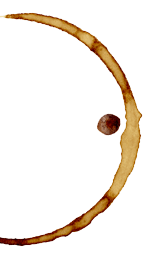

University of Cambridge
The Polar Museum, The Sedgwick Museum
This high profile museum is home to the last letters of Captain R.F. Scott, the four expedition diaries of Sir Ernest Shackleton and the Antarctic photographs of Herbert Ponting.
We designed a pristine white space, creating a stark background for the collection. Once put into this setting the objects speak for themselves, taking on greater importance and needing only a little interpretation to reveal their epic story.
The Sedgwick Museum of Earth Sciences
In contrast, rich colours played a critical role in the Sedgwick Museum to represent the key phases of geological time. This was useful for general visitors while the original massed display of specimens is retained for academic use.
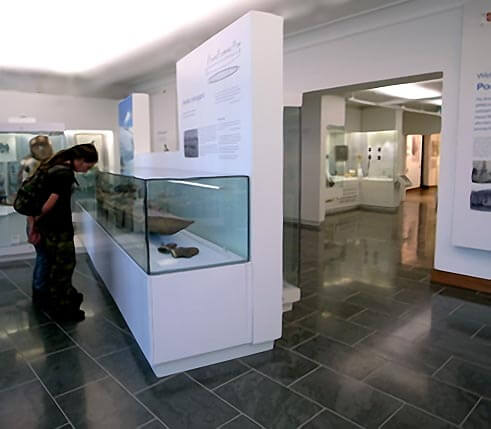
The beautiful domed entrance lobby made the obvious place for orientation.
To make the museum as accessible as possible, we wanted to make sure visitors can start at the most basic level, i.e. the differences between the North and South Poles.
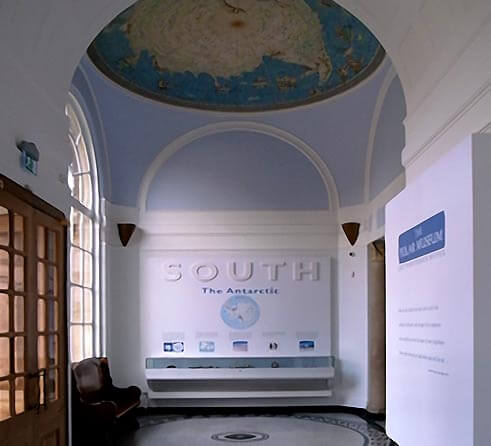
The white finish on every surface, except the floor, created a calm, serene and pristine atmosphere.
We wanted to create a space without gimmicks, that felt expansive, allowed for contemplation alongside the interpretation and gave due respect to the objects.
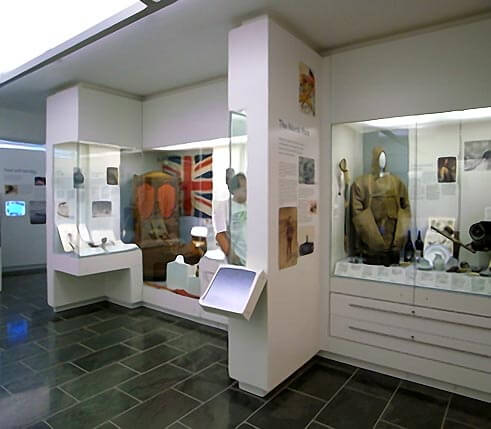
Every object at the Polar Museum has been given a place in the storyline. Most are unique and others, such as Captain Oates’ sleeping bag, are iconic.
We began the design process by spending many days with the client, understanding the place of each object within the story they wanted to tell. We then drew each object in 3D CAD before designing the gallery layout.
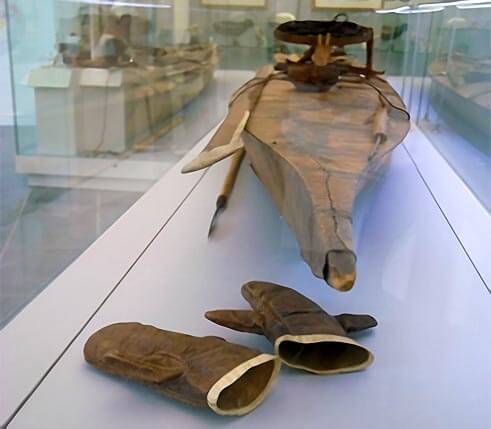
Images from the museumʼs collection are used throughout the new displays.
Immensely evocative photographs from the very first Polar expeditions, combined with breathtaking images from today provide the simplest and purest form of interpretation in the gallery. We incorporated these into graphic panels and touch screen displays.
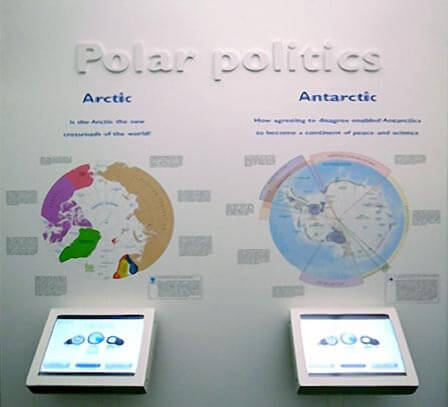
Touch screen displays were used to provide further interpretation.
These provided access to many more images than could be used on panels. They also enabled us to present a profile of each member of Scott’s two Antarctic teams, in far more depth than could be contained in cases or on panels.
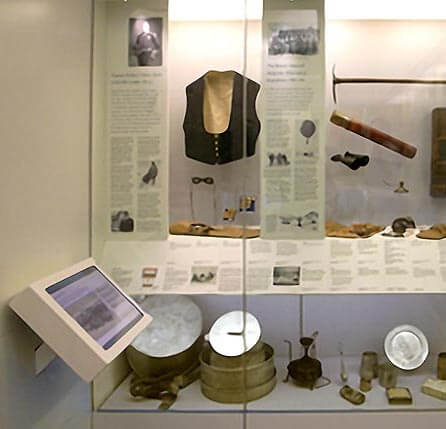
The reception, information and shop counter is set within the main display area.
The museum is staffed by a very enthusiastic team of volunteers, who are always ready to assist visitors. We wanted to ensure that they were easily accessible and easily visible from almost any point within the new displays.
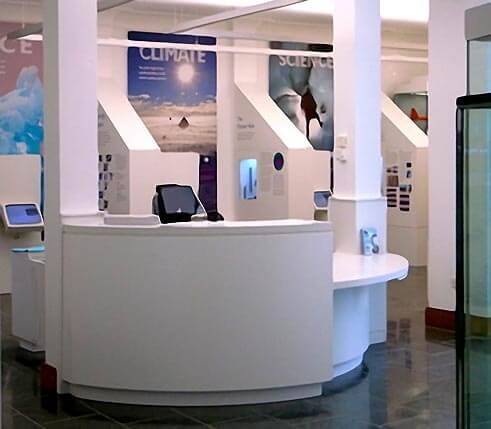
Ice and Climate bring the Polar story up to date in the new displays.
We designed the graphics and contents of showcases to be easy to update. Each subsection has a dedicated touch screen, which again provides a platform for frequently updated material. This data is either generated or gathered by SPRI and the British Antarctic Survey.
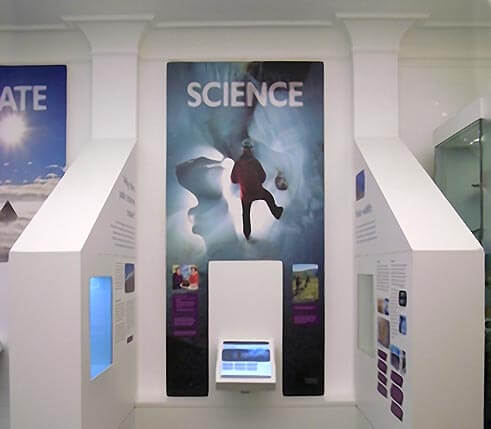
One entry in the visitor book summed up all we were aiming to achieve in the design of the museum:
“Something very special happens when you enter the exhibition...”
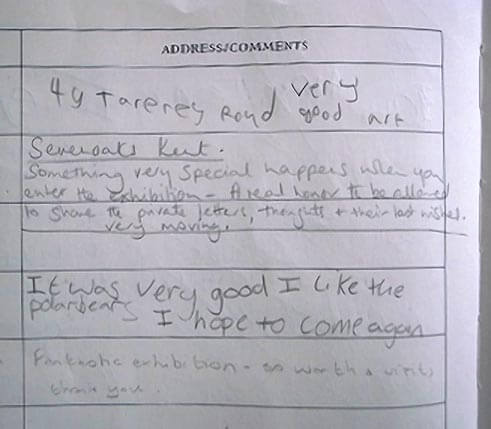
The Sedgwick Museum had functioned as a teaching facility for decades. Adding interpretation to this spectacular listed interior required great care.
We worked very closely with the curator to find the balance between widening access to the general public and still meeting the needs of the University who continue using the gallery as a teaching tool.
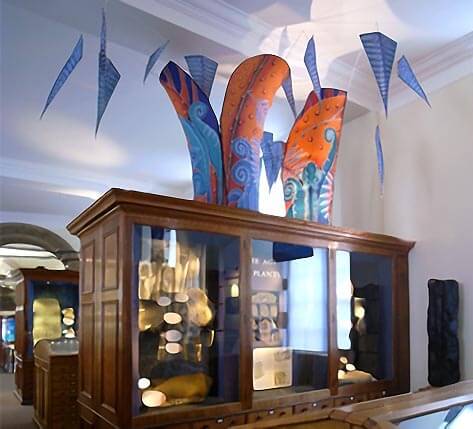
The Polar Museum Project Details:
Size: 230m2
Display Budget: £400K
HLF Bid: Yes
Type & subject
of exhibition:
New permanent display in refurbished museum
Display Contractor: The Workhaus
Architect: University of Cambridge Architects